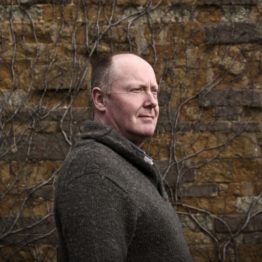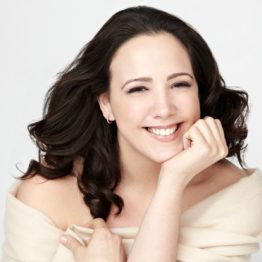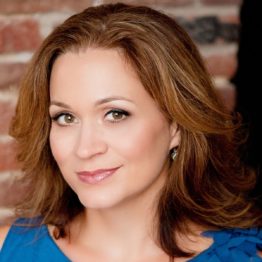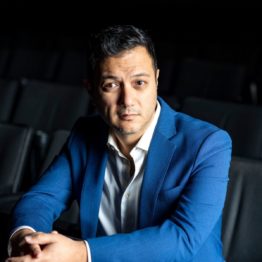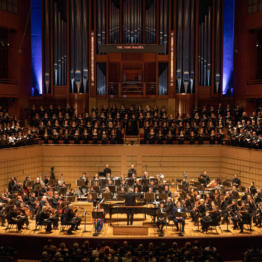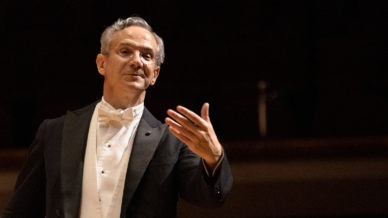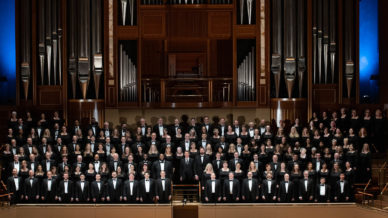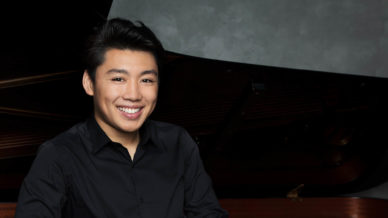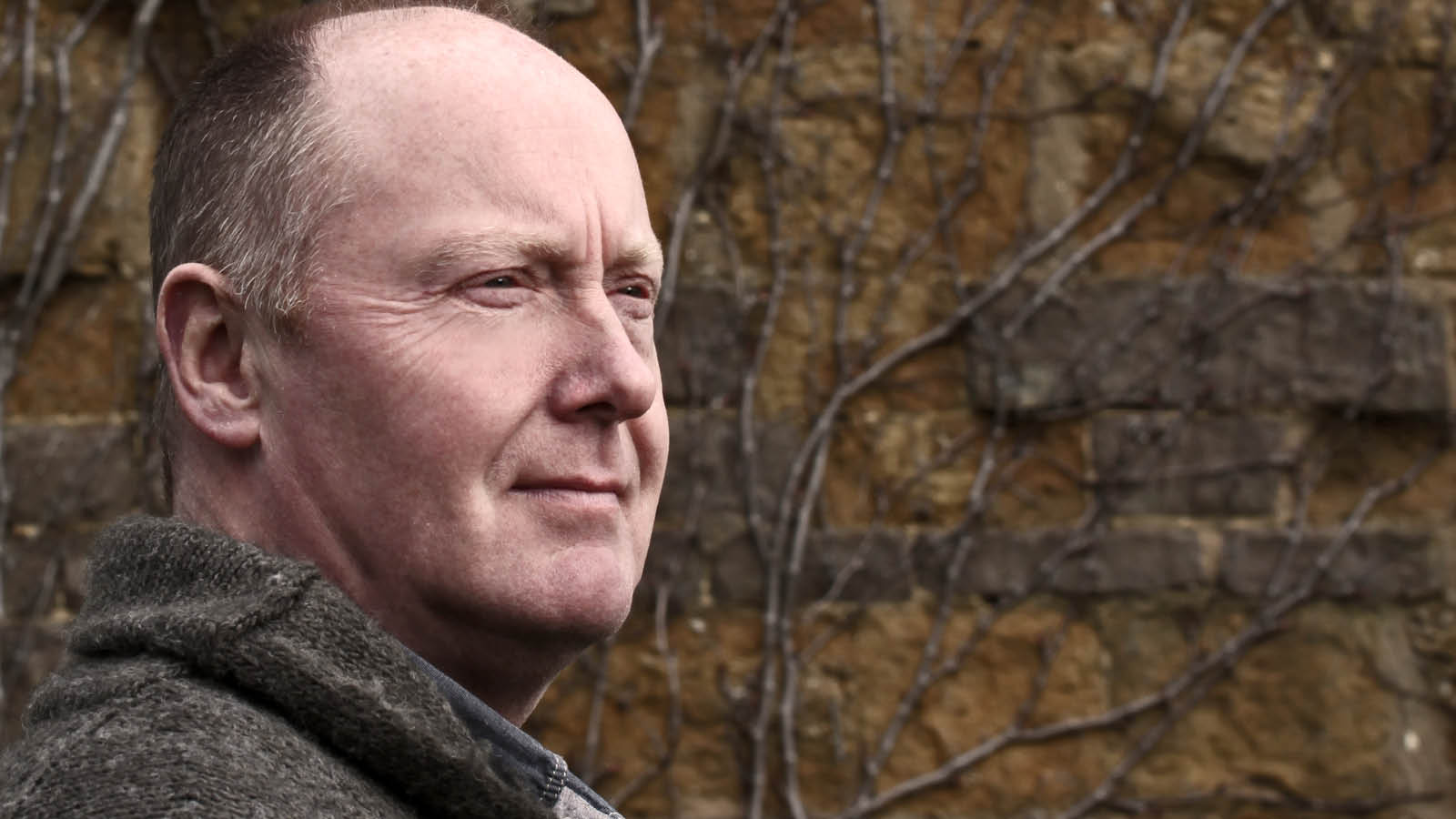

Mendelssohn’s “A Symphony Cantata”
March 2 – 5, 2023
THURSDAY 3/2/23 PERFORMANCE CANCELLED
Due to tonight’s inclement weather, we are very sorry to announce the cancellation of our Thursday performance. Ticketholders may contact us at customerservice@dalsym.com to exchange or donate their tickets.
PAUL MCCREESH conducts
SUSANNA PHILLIPS soprano
SARI GRUBER soprano
NICHOLAS PHAN tenor
DALLAS SYMPHONY CHORUS
PARRY Blest Pair of Sirens
MENDELSSOHN Lobgesang (A Symphony Cantata)
Paul McCreesh joins the DSO to conduct a grand spiritual concert including vocal soloists, the Dallas Symphony Chorus and the Lay Family Organ. Also known as his Symphony No. 2, Mendelssohn described the work as a “symphonic cantata.” Bearing a superficial similarity to Beethoven’s Ninth Symphony, it begins with three instrumental movements although on a much smaller scale and closes with a cantata-like structure for chorus, solo voices and orchestra.
Blest Pair of Sirens is a short work for choir and orchestra by English composer Hubert Parry, who was commissioned to compose a piece for the Bach Choir of London to commemorate the Golden Jubilee of Queen Victoria. The Glories of our Blood and State was to be used, but subsequently scrapped possibly due to lines including “Sceptre and crown must tumble down” not being the most suitable for the event.
Parry then decided to set Milton’s At a Solemn Music garnering immediate success and eventually being recognized as an outstanding English choral work.
Program features the Lay Family Concert Organ.
NOTE: This performance will be performed without intermission.
MORTON H. MEYERSON SYMPHONY CENTER
2301 Flora St.
Dallas, TX 75201

Program Notes
By René Spencer Saller
As a student at Eton, Parry studied composition and counterpoint with George Elvey, the organist of St. George’s Chapel, at Windsor. Although he distinguished himself in music, greatly impressing the Oxford Professor of Music Sir Frederick Ouseley with his examination cantata, he took the more conventional path instead: at Oxford he read law and modern history in preparation for a business career, studying music, his true love, on the side.
Despite his early triumph with the aforementioned cantata, which was performed and published to some acclaim, Parry got a relatively late start as a composer. He began producing his major works in 1880, when he was 32 and still unhappily employed as an insurance underwriter at Lloyd’s of London. In the 1870s he started contributing to George’s Grove’s Dictionary of Music and Musicians. (As it happens, Grove, a friend as well as colleague, suggested the John Milton ode that Parry used as a subject for his breakthrough choral composition, Blest pair of Sirens.) In addition to his entries for Grove’s Dictionary, Parry wrote music-history books, including a study of J.S. Bach that was published in 1909.
Beginning in 1882, Parry taught at the Royal College of Music in London, becoming director in 1894. Among his more famous pupils were Ralph Vaughan Williams, Gustav Holst, Frank Bridge, and John Ireland. Parry was knighted in 1898 and made a baronet four years later. He died at age 70 after contracting Spanish flu in the global pandemic of 1918.
Blessed Breakthrough
In 1887 the Anglo-Irish composer and conductor Charles Villiers Stanford, Parry’s colleague at the Royal College of Music, commissioned Parry to write a new piece for the Bach Choir of London in honor of Queen Victoria’s Golden Jubilee. Although Parry was still largely unknown, at least by the greater public, Stanford, one of his earliest supporters, considered him the greatest English composer since Purcell. The commission, Stanford’s first, yielded Blest pair of Sirens, Parry’s setting of a 1645 ode by John Milton, “At a Solemn Musick.” It would be Parry’s first major choral work—and his critical and commercial breakthrough. Since its 1887 premiere, it has remained a staple of the British choral repertoire.
Despite the fact that Milton, an outspoken anti-monarchist, supported Cromwell in the English Civil War and was arrested, imprisoned, and heavily fined for his revolutionary political tracts, Blest pair of Sirens delighted the many royalists at its premiere, in London’s St. James’s Hall: Parry proudly reported that it was received “quite uproariously.” More recently, Blest pair of Sirens was performed at the 2011 wedding ceremony of Prince William and Kate Middleton, now the Prince and Princess of Wales.
The two sirens referenced in the title refer to those “sphere-born harmonious sisters, voice and verse,” whom Milton entreats to “wed their divine sounds, and mix’d power employ.” Scored for orchestra and chorus, “Blest pair of Sirens” consists of one very long (but entirely grammatical) sentence, which takes up all but the last four lines, a concluding exhortation:
O may we soon again renew that song,
And keep in tune with heaven, till God ere long
To his celestial concert us unite,
To live with Him, and sing in endless morn of light!
Despite their brevity on the page, those final four lines bear a significant part of the ode’s rhetorical burden, and Parry lingers over them accordingly: from a total of 256 measures, he allots them nearly 100. Milton’s poem describes the speaker’s impassioned response to sacred music, a divine taste of what he expects to hear in the afterlife. Parry’s setting, with its eight-part counterpoint and intricately interwoven lines, brings the poem back to its inspiration: Baroque sacred music. But Parry’s music also draws on Wagnerian “endless melody” and Brahmsian harmonies, lending a peculiar timelessness to the composition. Suspended in the sweet spot between ecstasy and awe, Blest pair of Sirens transforms experience into epiphany.
Mendelssohn made the most of his brief charmed life. His wealthy parents ensured that he had the finest possible education, and they turned their Berlin mansion into a concert hall twice a month, promoting their young son as a musical prodigy. When he was 12 years old, he met the elderly Goethe, who rhapsodized about the boy’s genius: “What [Mendelssohn] already accomplishes bears the same relation to the Mozart of that time that the cultivated talk of a grown-up person bears to the prattle of a child.”
Before Mendelssohn was out of his teens, he had completed approximately 100 compositions, including operas, quartets, concertos, and a magnificent octet for strings. By age 20 he had written his famous overture after Shakespeare’s A Midsummer Night’s Dream and conducted Bach’s St. Matthew Passion to rave reviews. He visited the United Kingdom on several occasions and greatly impressed Queen Victoria and her spouse, Prince Albert. The royal couple, both quite musical, invited Mendelssohn to play for them on numerous occasions; he even accompanied the Queen while she sang some of his and his sister Fanny’s songs at Buckingham Palace.
Mendelssohn, Jewish at birth, converted to Lutheranism in early childhood, along with the rest of his immediate family (Felix and his siblings in 1816, their father six years later). Around the same time, the family added the Protestant-sounding surname Bartholdy to their original last name; Felix’s uncle Jakob Salomon, his mother’s brother, had adopted that name some years earlier, upon his own conversion to Christianity. Although the Mendelssohn family almost certainly would have stayed Jewish in a less oppressively anti-Semitic environment, the composer fully embraced his new religion and remained a devout Lutheran all his life.
In 1840, when Mendelssohn wrote his Symphony No. 2 in B-flat Major, he was routinely working himself to exhaustion. Since his appointment five years earlier as the conductor of the Leipzig Gewandhaus Orchestra, he had successfully transformed the ensemble into one of the finest in Germany, arguably the world, and he constantly strove to improve. A groundbreaking music director and maestro, he was one of the first conductors to lead an orchestra with a baton, and many of his programming practices—such as mixing familiar repertoire with newer, more challenging fare—are now the norm in concert culture. During this time Mendelssohn was also laying the groundwork for the conservatory that he would help found in 1843.
Happily married since 1837 to Cécile Jeanrenaud, a beautiful clergyman’s daughter, Mendelssohn adored his young wife and their growing family. (The decade-long marriage produced five children.) But the composer’s hyperactive work schedule, combined with his exacting standards and superhuman ambition, surely contributed to his early death. When his beloved sister, esteemed colleague, and lifelong confidante Fanny died of a stroke in 1846, Mendelssohn reportedly shrieked and fainted, rupturing a blood vessel in his brain. Although he lived for another year, he was in severe physical and emotional pain until he succumbed to the family malady at 38.
In Praise of Print
In 1840 dozens of festivities took place across Germany to mark the 400th anniversary of the Gutenberg moveable-type press. Leipzig enjoyed special prominence as a publishing center, and an elaborate three-day music festival was staged for that June featuring, among other events, two new major works composed and conducted by Mendelssohn: the monumental Festgesang, sometimes called the “Gutenberg Cantata,” scored for a 200-voice male chorus and two enormous brass bands; and a “symphony-cantata” scored for orchestra, chorus, three solo singers (a tenor and two sopranos, or tenor, soprano, and mezzo-soprano), and organ.
The Leipzig-based music publisher Breitkopf & Härtel prefaced the score for the symphony-cantata with a quotation by Martin Luther: “Rather I wished to see all the arts, especially music, serving Him who gave and created them.” Below the Luther quotation was a title that reinforced its devotional purpose: “Lobgesang/Eine Symphonie-Cantate/nach Worten der heiligen Schrift, componiert/von Felix Mendelssohn-/Bartholdy” (Hymn of Praise/A Symphony-Cantata/ after Words of the Holy Scripture, composed/by Felix Mendelssohn-/Bartholdy). The connection between print and the Bible would have seemed obvious to Mendelssohn and his fellow Lutherans: Gutenberg’s first significant publication on his new press, the text that would ensure his fame hundreds of years later, was a German-language edition of the Bible, based on Martin Luther’s own translations of the scriptures.
Mendelssohn’s hybrid genre, the “symphony-cantata,” provoked comparisons to Beethoven’s iconic Ninth Symphony, which had debuted only 16 years earlier. Although the similarities between the two works are obvious enough, they are also fairly superficial. In the Ninth Beethoven waits until his climactic finale to unleash the chorus and its ecstatic “Freude” juggernaut. Mendelssohn, like his esteemed predecessor, starts his symphony with three purely orchestral movements, but what follows is a lengthy cantata, not a single-movement choral finale. The cantata alone consists of 10 or so numbers, depending on how you count them. Combined, the symphony and cantata are nearly twice as long as any of Mendelssohn’s purely instrumental symphonies.
Along with the inevitable Beethoven comparisons, Lobgesang garnered positive reviews, most notably from Mendelssohn’s friend and colleague, the composer-critic Robert Schumann, who attended the premiere and reported that “the work was enthusiastically received, and its choral numbers especially must be counted among the master’s freshest and most delightful creations; and what this praise means, after his great achievements, will be understood by everyone who has followed the evolution of his compositions.”
A Brief Note on Nomenclature
Mendelssohn’s symphonies are numbered according to their date of publication, not composition. Although only the second to be published, Symphony No. 2 was the second to last symphony that Mendelssohn composed. He died seven years later, after suffering a series of strokes. After his death, the Lobgesang Symphony-Cantata was republished, this time as Symphony No. 2 in B-flat major, a designation that the composer never sanctioned, insofar as he never considered it a symphony, strictly speaking.
A Closer Listen
The opening instrumental movements are played attaca, a feature distinguishing the work from its Beethovenian model, as Schumann noted in his review: “[T]he three orchestral movements proceed without any pause between them—an innovation in the symphonic form. No better form could have been selected for this special purpose.”
The first movement (Maestoso con moto – Allegro) begins with a bracing theme from the trombones, which will recur in subsequent movements, eventually serving as the melody for the words from Psalm 150 that open the cantata portion of the symphony: “Alles, was Odem hat, lobe den Herrn” (Everything that has breath, praise the Lord). This fanfare-like ascending motif is flexible enough to convey both effort and euphoria: a kind of relentless joy. When Mendelssohn conducted the work in Düsseldorf in 1842, the audience erupted into spontaneous applause as soon as the trombones reprised the theme, right before the entrance of the chorus, and Mendelssohn had to start that section over from the top.
After the spellbound second movement, a fleet minuet and trio marked Allegretto un poco agitato, the Adagio religioso conjures up the calm before the storm: the joyous onslaught that is the opening of the cantata. In addition to the three solo singers, the chorus is divided and subdivided into various groupings, which both support the soloists and function as distinctive voices, albeit of a collective identity. Among the many highlights of the cantata section is “I waited for the Lord,” an exquisite duet for sopranos and chorus. Graced by a lambent horn, intertwined melodies, and thrilling close harmonies, the song became famous as a standalone piece later in the century. According to Schumann, people at the premiere responded to the duet right away. “There broke forth in the audience a whispering which counts for more in the church than loud applause in the concert-hall,” he reported in his review. “It was like a glimpse into a heaven of Raphael’s madonnas’ eyes.”
Less celebrated but equally outstanding is the tenor’s aria “The sorrows of death,” an anguished, ardent cri de coeur that contrasts perfectly with the contrapuntal choral majesty of “The night is past,” which begins with the soprano soloist’s unassailable declaration of same. (Lighten up for the Enlightenment, you might say.) The remaining three numbers sustain this mood of exalted service and enlightened devotion to the Lord. The hymn that powers the chorale, “Now Thank We All Our God,” was a particular favorite of Mendelssohn’s. The brief coda resurrects the opening motif, the mother lode of all that follows. First sung by the trombones, then by the chorus and remaining instruments, the “praise” theme brings the symphony-cantata full circle.
